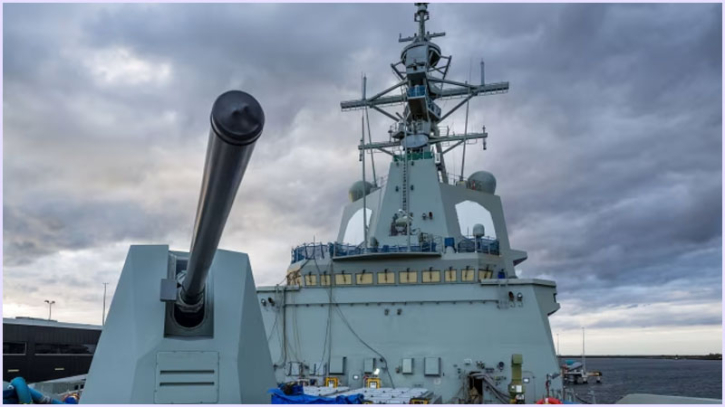Australia to invest $12bn on missile manufacturing in face of China's rise

Australia will invest up to 18 billion Australian Dollar (US$12bn) to strengthen manufacturing of missiles, including making advanced guided missile systems in the country for the first time, as part of an overhaul of its defence strategy in the face of rising geopolitical tensions.
Pat Conroy, Australia’s defence industry minister, said on Wednesday that strategic competition between China and the United States was “sharpest” in the Indo-Pacific region as he announced the plan in Canberra. He cited a recent Chinese ballistic missile test that entered the south Pacific as a significant concern.
Australia has overhauled its defence strategy over the past three years to respond to China’s military build-up, following the creation of the Aukus alliance with the US and the UK, which will deliver nuclear-powered submarines to the Pacific country.
Canberra has also shifted its military posture to adapt to what the country’s defence review termed the “missile age”, backed by a A$50bn (US$33bn) increase in defence spending over the next decade.
The defence review noted that “the proliferation of long-range precision strike weapons” had “radically reduced” the natural defensive advantage of Australia’s geographic remoteness.
Part of that strategic shift includes a push to reduce Australia’s reliance on alliance partners to supply munitions by establishing manufacturing facilities in the country.
Conroy said a new facility would be developed alongside US arms contractor Lockheed Martin to produce guided multiple-launch rocket systems from 2029.
The complex, which will be the first outside the US to produce the missile systems, will be located in either Victoria or New South Wales at an initial cost of A$316mn and will be capable of producing 4,000 such missiles a year, which Conroy said equated to a quarter of current global production.
“As well as acquiring more missiles, more rapidly from our partners, we need to build a new Australian guided weapons manufacturing industry,” Conroy said. “Long-range strike is critical to deterrence.”
Australia on Wednesday also confirmed a deal with France’s Thales to produce 155mm M795 artillery ammunition, which is used in howitzers, at a government-owned facility in the Victoria town of Benalla.
It expects to produce up to 15,000 rounds a year by 2028, but production could be scaled up to 100,000 rounds a year, which would support 550 jobs, according to the government.
The efforts have raised Australia’s profile in the global defence supply chain. A new factory in Queensland, jointly owned by local company NIOA and Germany’s Rheinmetall, is producing tens of thousands of artillery shells for Ukraine in its defence against Russian forces.
South Korean, US and Norwegian defence companies have also invested in Australian defence facilities over the past two years.
Conroy said Australia’s navy would also take its first delivery of US Tomahawk long-range missiles by the end of the year.
The range of the missiles, which are currently used only by the US and UK and will be used by Australia’s Hobart-class destroyers, is more than 2,500km, a 10-fold increase on the current capability.
.png)




